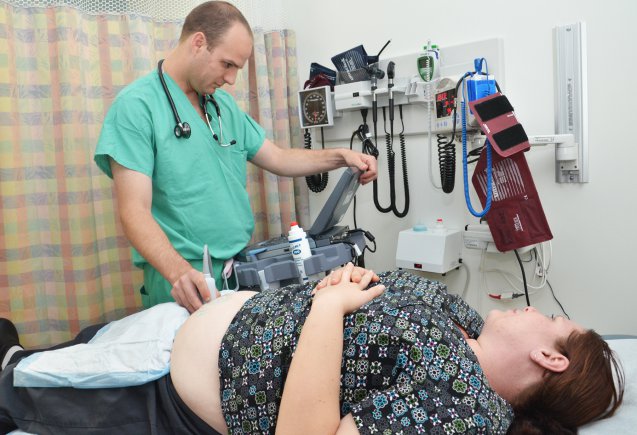Some hospitals put out the welcome mat for GP obstetricians, others pull it from under their feet
The door appears to be slamming shut on GP obstetricians in some Western Australian hospitals, just as a window of opportunity is opening up in Queensland’s maternity wards.
Western Australian GP obstetricians took to the media this month to protest hospitals removing GPs from their rosters.
Seven GP obstetricians have long delivered babies at Rockingham General Hospital in Perth’s outer suburb of Cooloongup.
Now, for the first time, the hospital has forced its GP obstetricians to compete for new jobs, and only one GP secured a position.
“I don’t understand why GP obstetricians had to be excluded almost entirely,” Dr Nooshin Rasool, a GP obstetrician who will no longer able to be involved in intrapartum care at the hospital, told newsGP.
A similar story emerged from the large rural centre of Kalgoorlie in Western Australia.
GP obstetrician Dr Kylie Sterry told the local newspaper, Kalgoorlie Miner, that she couldn’t care for her public obstetric patients at Kalgoorlie Health Campus over the past year.
The region’s longest-serving GP obstetrician, Dr Malcolm Hodsdon, who has been working in the field for 40 years, told The Medical Republic the hospital had limited GPs’ ability to look after public patients when it hired a salaried obstetrician.
The three GP obstetricians in Kalgoorlie were rostered on for fewer and fewer on-call days at the hospital.
Dr Hodsdon eventually gave away GP obstetrics when his credentials came up for renewal.
“It’s been a blow,” Dr Hodsdon said. “One of the joys of being in a place like Kalgoorlie was looking after patients in hospital, as well as from my rooms. That’s all been taken away.”
The loss of hospital work eliminated much of the appeal of moving to a rural centre such as Kalgoorlie for GP registrars wanting to try their hand at obstetrics or emergency medicine, Dr Hodsdon said.
“I can’t see why any young doctor would want to come to Kalgoorlie,” he said.
GP obstetricians were the only providers of intrapartum care in remote Australia, so they needed access to hospitals to keep their birthing skills up-to-date, Dr Wendy Burton, a Brisbane GP and the chair of the RACGP Antenatal/Postnatal Care Specific Interests network, said.
“That skill is being lost pretty much across the nation in cities,” she said.
The squeezing out of GP obstetricians from city hospitals meant a rural GP obstetrician who moved to the city would lose their broad skillset, even if that stay was only temporary, she said.
Midwives were “wonderful” providers of maternal care, and specialists could do more procedures than GPs, but “the ultimate continuity of care role sits with GP obstetricians who can be looking after women for decades and generations,” Dr Burton said.
If local GP obstetricians were not equipped to handle deliveries, pregnant women in rural and remote Australia would have to travel further for care, Dr Ewen McPhee, a GP obstetrician and the president of ACRRM, said.
It was administratively easier for hospitals to fill their rosters with specialists and trainee specialists who were in the hospital all the time, he said. “But the more we surrender our role to specialists just to fill rosters, the more mothers are losing out on the care they deserve.”
However, it’s not all bad news; Dr Martin Byrne, a GP who was, until recently, the chair of RANZCOG’s GP Obstetric Advisory Committee, said the Rural Generalist Pathway was producing a growing number of GPs trained in obstetrics, anaesthetics and emergency medicine.
There were currently around 2,200 GPs that maintained their diploma of obstetrics and gynaecology across Australia, and that number was growing. “We see that there’s a real boom,” Dr Byrne said.
Only a small proportion of those GPs actually delivered babies in hospitals. But the opportunities to gain these skills were available in Queensland, with hospitals in Stanthorpe or Dalby or Kingaroy being particularly GP-friendly, Dr Byrne said.
In South Australia GP obstetricians are still delivering babies in hospitals in Mount Barker and Victor Harbor, which are only an hour out of the city. SA had a centralised program for GP shared care, which made it easier for GPs to communicate with the hospitals, said Dr Michelle Emmerson, a GP from Hallett Cove in SA.


